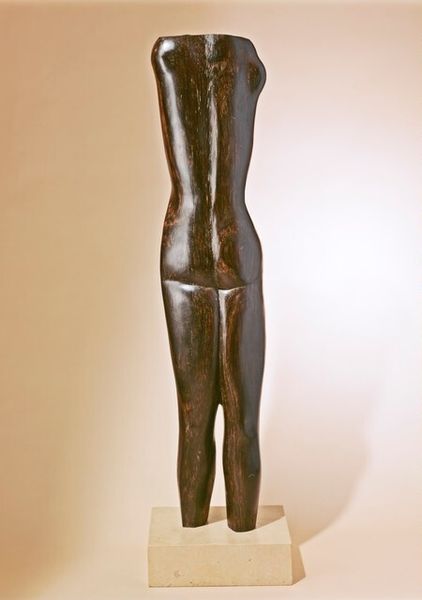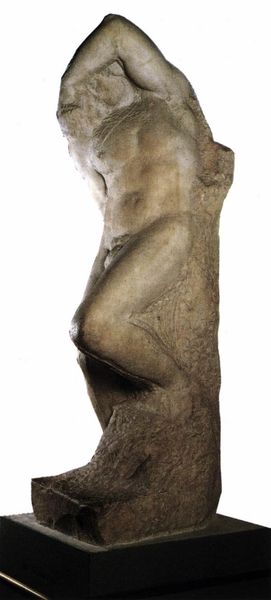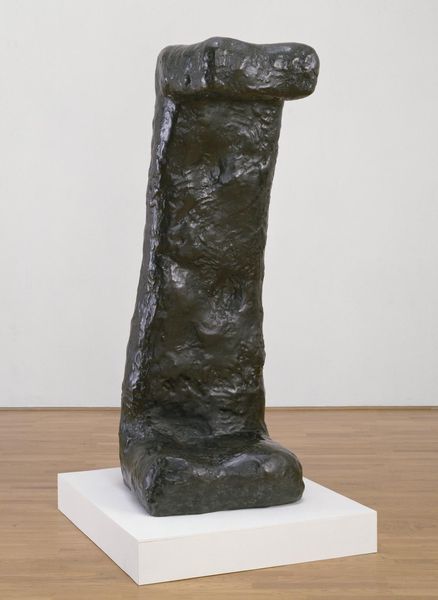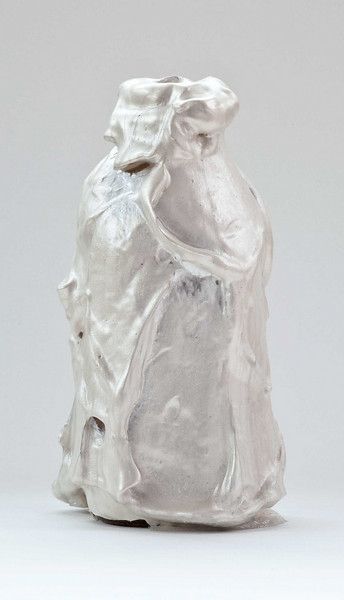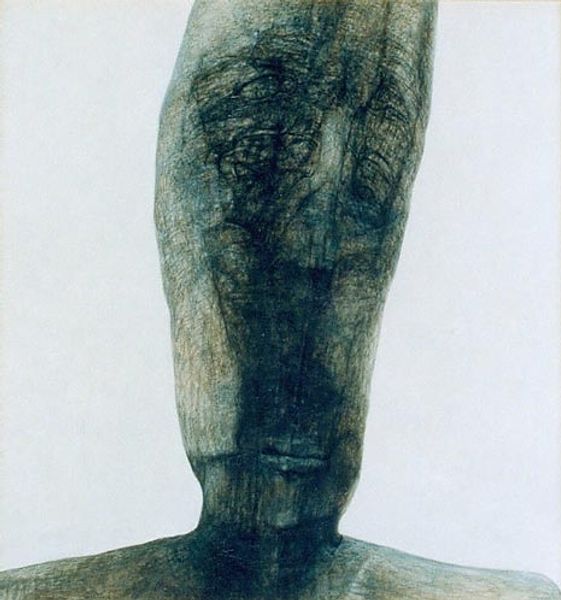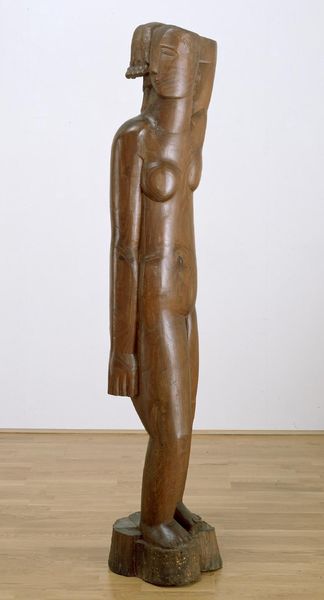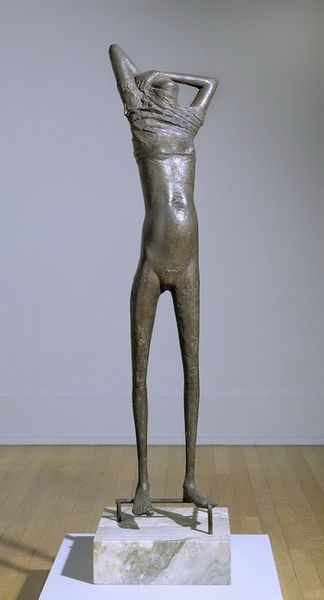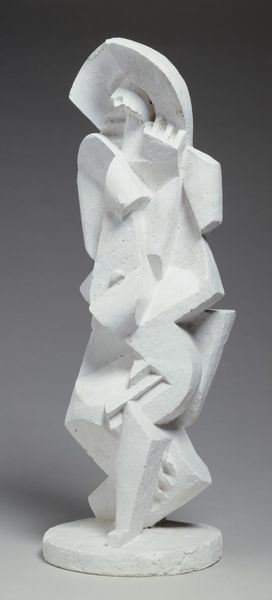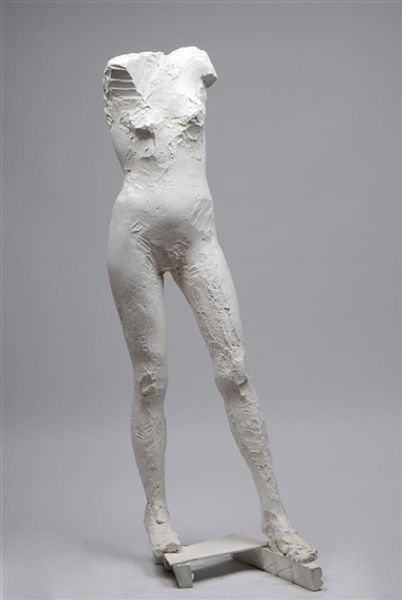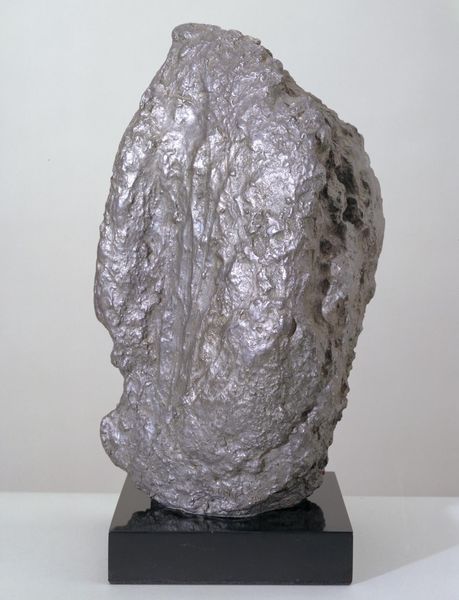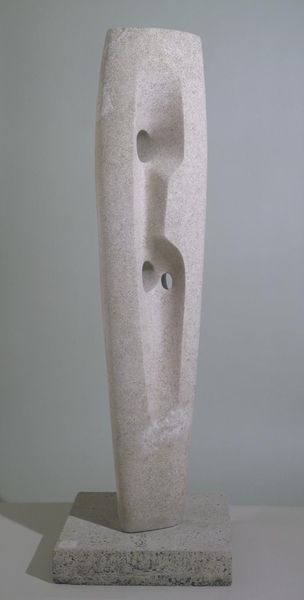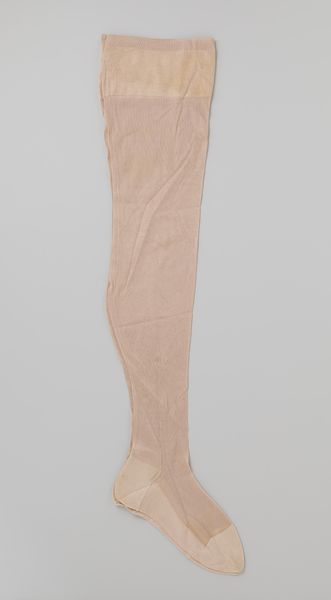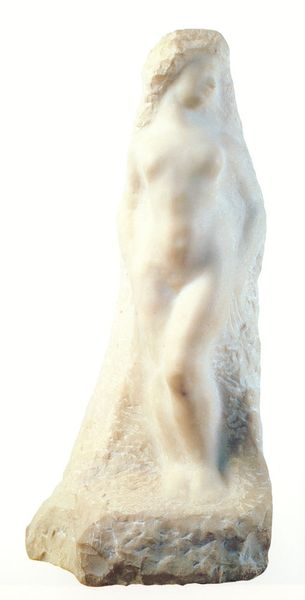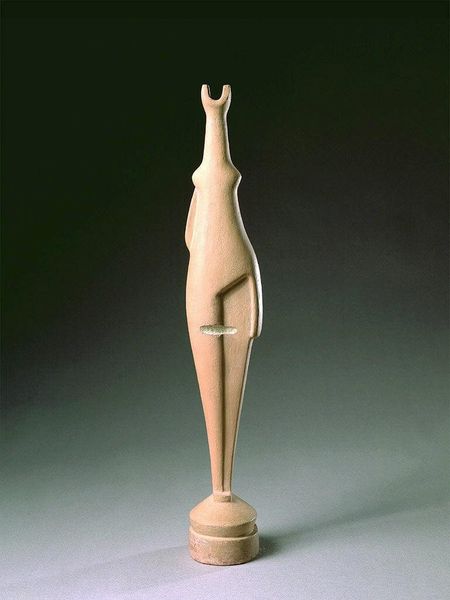
Dimensions: displayed: 860 x 470 x 190 mm
Copyright: © The estate of Arturo Martini | CC-BY-NC-ND 4.0 DEED, Photo: Tate
Curator: Here we have Arturo Martini’s “Torso of a Young Man,” currently residing in the Tate Collections. Editor: It’s striking how tactile it seems. You can almost feel the rough texture of the terracotta. There's a vulnerability in the exposed back. Curator: Martini was a complex figure. He grappled with Fascist aesthetics in pre-war Italy, and there are arguments that his work promoted those ideals of idealized masculinity. Editor: Yet, there’s a fragility here that complicates that reading. The missing limbs, the raw material—it feels less like a celebration of power and more like a study of incompleteness. How does this fit into the broader conversations around body image? Curator: It’s interesting to consider its reception in post-war Italy. Martini later rejected his earlier artistic leanings, so it creates a tension between the artist's intent and the socio-political context. Editor: Ultimately, it’s a deeply evocative piece that speaks to the fragmented nature of identity and the historical weight carried by the human form. Curator: Indeed. A fascinating object for continued reflection.
Comments
tate 6 months ago
⋮
http://www.tate.org.uk/art/artworks/martini-torso-of-a-young-man-t06863
Join the conversation
Join millions of artists and users on Artera today and experience the ultimate creative platform.
tate 6 months ago
⋮
The terracotta torso is by one of the most important artists of the Italian 'return to order' movement. This followed the First World War and was a reaction to the avant-gardism of the pre-war period. In some respects it appears quite classical: its emphasis on the young man's spine and rib cage, together with the hollowness of the cast, recalls Roman body armour; in addition, the fact that it is an incomplete figure suggests allusion to damaged ancient sculptures. The sculpture's classical references, however, are subtly countered by the figure's elongated form which suggests medieval, rather than ancient, art. Furthermore, it does not glorify male form: it has a sensuous, almost feminine appearance. Gallery label, August 2004
